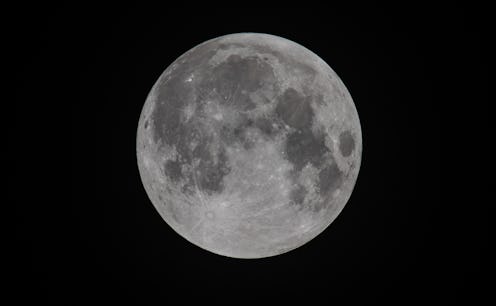Life
This Kind Of Lunar Eclipse Is Happening Soon
Astronomy fans, you're in for a special treat. It wasn't too long ago that we had a penumbral lunar eclipse — it was on March 23 — and you might remember just two days ago, on Sept. 1, there was an annular solar eclipse. Well, now we're already due for another penumbral lunar eclipse, this one on Sept.16, 2016. So in case you missed it the first time around, never fear! There's another opportunity to catch it.
For those of us who aren't up-to-date on our astronomy (I still have a hard time remembering which is a lunar and which is a solar eclipse), a penumbral eclipse is a type of lunar eclipse that happens when the moon moves through the outer part of the Earth's shadow (also known as the penumbral shadow). Earthsky.org notes that there is "never a dark bite taken out of the moon, as in a partial eclipse," and that "at best, mid-eclipse, very observant people will notice a dark shading on the moon's face." In other words, it's subtle, but not completely rare: Eclipse experts say that penumbral eclipses make up 35 percent of all eclipses.
According to timeanddate.com, the penumbral eclipse will be visible on Sept. 16 from Europe, parts of Asia, Australia, and eastern Africa. The very western parts of South America, as well as Antarctica, will also be able to see at least parts of the eclipse. Sorry, North Americans — that means no eclipse for you.
The eclipse will begin at approximately 4:54 p.m. UTC, with the maximum eclipse occurring at 6:54 p.m., and will end around 8:53 p.m., so it will last about four hours in total. Space.com recommends viewing the eclipse through a good telescope, or even a pair of binoculars.
Images: Giphy (2)
